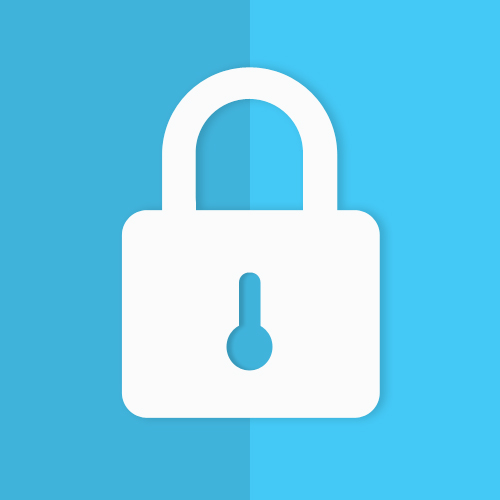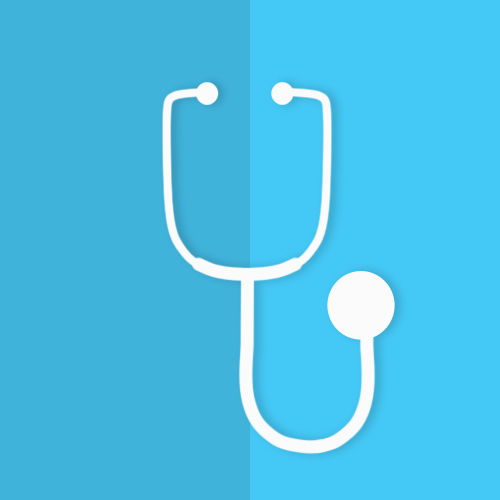Developing a health or wellbeing app?
Find out which laws and standards apply to you when creating an app that may be used in Australia. This tool:
- Helps you identify which Australian laws apply to your app
- Suggests best practices to promote consumer confidence in your app
While this is not legal advice, it will point you in the direction of resources to help ensure your health app is legally compliant and in line with industry and community standards.
This tool will cover six areas of the law:
- Privacy
- Security
- Content
- Advertising
- Financial
- Medical device
It provides a checklist to ensure your app meets the highest standards of professionalism.
The tool also provides a list of relevant Laws and Standards
Produced in cooperation with The University of Sydney and the Australian Communications Consumer Action Network (ACCAN).

1. Privacy
Health information is one of the most sensitive types of personal information. For this reason, the law requires extra protections when handling health information. Most health apps are covered by the Privacy Principles of the Australian Privacy Act. Answer these questions to find out how it applies to you:
1.1 Does the app collect, use, disclose or hold any personal information?
| YES |
Go to Question 1.2. |
| NO |
You do not need to comply with any privacy legislation. |
1.2 What kind of developer are you?
| An individual or entity conducting a commercial activity |
Go to Question 1.3. |
| A federal public entity |
You must comply with the Australian Privacy Principles. |
| A State or Territory public sector entity |
Your app is covered by your State or Territory’s privacy legislation and you must comply with their Privacy Principles. |
| An individual |
You are not required by law to comply with privacy legislation unless you are conducting commercial activity. However, you should build privacy into your app’s design. Here’s how. |
1.3 Has your business had an annual turnover Annual turnover for the purposes of the Privacy Act includes all income from all sources. Annual turnover does not include assets held, capital gains or proceeds of capital sales.
of more than $3,000,000 in any financial year since 2002?
1.4 Does the app do, or claim to do, ANY of the following in ANY way?
- Assess, maintain or improve a person's physical or mental health, fitness or wellbeing?
- Manage a person’s condition, disability or disease?
- Diagnose or treat a person's illness or disability, or injury?
- Record a person’s health information?
PRIVACY BOX
The Australian Privacy Principles outline how to collect, use and manage personal information. You must:
- Manage personal information in an open and transparent way (this includes having a clearly expressed Privacy Policy)
- Adhere to principles about how personal information can be collected, used and shared
- Take measures to maintain the quality of personal information
- Keep personal information secure
- Ensure people can access and correct their personal information
Here’s how. For more information, see the
website of the Office of the Australian Information Commissioner (OAIC).

2. Security
If your app is subject to the Privacy Act, then you must take reasonable steps to protect the personal information you collect, store or share. Even if your app is exempt from the Privacy Act, you should ensure the app is secure.
There is no specific security law that app developers must follow. Instead, developers should use a risk-based approach to decide on the most appropriate level of security. The more sensitive the personal information collected, the stronger your security should be. Health information is highly sensitive, so apps that collect, store or share health information should adopt the strongest security measures.
WHY SECURITY MATTERS
The US Federal Trade Commission recently found that 12 popular health apps transmitted personal data, including names, email addresses and unique device IDs to 76 third parties. Some third parties received personal data from more than one app, allowing them to put together a more complete picture of the user. This could greatly affect a consumer’s insurance premiums, for example, if this data is then sold.
Here’s how you can ensure your app is secure:

3. Content
Australian law prohibits offensive online material, including offensive content in smartphone apps. In particular, your app must not expose children to offensive or unsuitable material. See if these rules apply to your app:
3.1 Does your app contain ANY of the following?
- Images of child sexual abuse or instructions in paedophilia
- Depictions of gratuitous or exploitative violence including sexual violence
- Depictions of actual or exploitative sexual practices including bestiality or incest
- Detailed instruction in or promotion of crime or violence including the use of illicit drugs or terrorist acts
| YES |
Your app is prohibited by law and must not be available for download in Australia. Distribution, promotion or possession of this kind of app is a criminal offence. Offensive content in your promotional materials is also prohibited. |
| NO |
Check your social media channels regularly. If offensive material is posted by users in relation to your app, you must remove this promptly. Go to Question 3.2. |
3.2 Your app must have an appropriate age-classification. Check your app for mature themes and language, violence, sex, drug use and nudity and check the classifications here. Is your app classified, or likely to be classified, as R18+ or MA15+?

4. Advertising
Australian Consumer Law covers how an app is advertised. Promotional materials:
- That are deceptive or misleading are prohibited
- Should not be offensive and should be age-appropriate
- Should provide information about financial costs associated with buying and using the app
- For medical devices have further restrictions
WHAT ARE PROMOTIONAL MATERIALS?
Promotional materials are any information provided about an app to the public including: app store description; app store category; and information about the app on the developer’s website, media releases, multimedia or social media channels. This includes testimonials, quotes and user reviews that have been copied by the app developer into promotional material but excludes user reviews posted directly onto an app store, and information written and disseminated by a third party. External postings about the app on an app developer’s social media channels are also excluded, although these should be regularly monitored by the app developer and corrected if misleading. They must be removed if offensive.
4.1 Do the app’s promotional materials accurately reflect what the app provides?
4.2 Is the promotional material likely to be seen by an audience that includes children?
| YES |
You should adhere to the industry standards for advertising to children. If this is an app for adults, it should not be promoted in places where children will see it. |
| NO |
You should adhere to the industry standards for advertising. |
4.3 Are there any up-front or in-app charges associated with downloading or using the app?
| YES |
You must be clear and transparent in your advertising about the cost of the app, including whether in-app purchases are required for full functionality. |
| NO |
Go to Question 4.4. |
4.4 Does downloading or usage of the app require extraordinary amounts of data?
| YES |
You should provide information upfront about data usage. |
| NO |
Go to Question 4.5. |
4.5 Does your app and related material act as a proxy advertisement for a health practitioner who is subject to regulation under the Australian Health Practitioner Regulation Agency (AHPRA)?
| YES |
You must adhere to the guidelines for advertising regulated health services. |
| NO |
Go to Financial. |

5. Financial
Some developers choose to make their app available to consumers for free, others for a price. Some apps also include in-app purchases, which allow consumers to upgrade or access extra content or buy subscriptions. You should provide information about in-app purchases in promotional materials and in the app. This information should be easily accessible and readily understood. If your app is targeted at potentially vulnerable users such as children or people living with mental illness, you should not repeatedly offer users in-app purchases.
5.1 Does your app contain in-app purchases?
| YES |
You should provide information about in-app purchases in promotional materials and in the app. You must indicate whether in-app purchases are required for full functionality.
|
| NO |
Go to Medical Devices. |
5.2 Do you sell your app directly to consumers (e.g. via your own website)?
| YES |
You should have an obvious and accessible process for refunding consumers the costs of downloading or using the app if it fails to meet Australian consumer guarantees. |
| NO |
The app store where you sell your app should have an obvious and accessible process for refunding consumers the costs of downloading or using the app if it fails to meet Australian consumer guarantees. |

6. Medical Device
Some apps fit the legal definition of a “medical device.” Whether apps are covered by medical device laws depends on how likely it is that use of the app will result in consumer harm. See whether your app is a “medical device” and what this means for you.
IS MY APP A MEDICAL DEVICE?
User-generated data is any information entered into the app that comes from the user. This includes numbers or text entered directly by the user, active measuring or sampling of biological information, and passive entries from wearables. Apps may rely on user-generated data to generate tailored messages to users. Messages could be generated by algorithms, calculators, coaches or other means. If an app delivers health messages, it may be classified as a medical device. Example health messages include:
- Diagnosis: e.g. The user has…
- Prognosis: e.g. The user is at risk of …
- Monitoring: e.g. The user’s disease is getting better / worse, or is stable / unstable
- Advisory, including specific advice on how to alleviate or prevent a specific disease or modify a physiological process (“treatment” or “prevention”): e.g. The user should pursue a particular behaviour or use a product or service in a particular way (eg specifying dose or timing)
An app is unlikely to be classified as a medical device, if the app only ever:
- Indicates the risk that a population group has of developing a disease
- Provides general advice about a “healthy lifestyle” (such as limiting smoking and alcohol use, getting sufficient exercise)
- Provides links to support groups
- Gives generic advice to “seek help”
- Provides education about disease, anatomy or physiology
- Reminds users to take medications
- Monitors general health, fitness, wellbeing or the menstrual cycle (except if it investigates a specific physiological process)
- Stores user-generated data for later review by a health professional
Remember apps are defined as health-related more broadly when it comes to privacy than medical device law. Go to Privacy.
6.1 Is the focus of the app ANY of the following?
- A specific disease, injury or disability? This DOES include medical diagnoses and conditions (e.g. depression, eating disorder). It does NOT include symptoms or conditions that are not classified as a medical disease (e.g. stress, trouble concentrating, difficulty sleeping)
- An anatomical or physiological process? This DOES include things like the sleep cycle. It does NOT include general well-being
- Control of conception
6.2 Does the app claim that the output from the device can prevent or treat a specific disease, injury or disability or directly influence an anatomical or physiological process?
| YES |
Your app may be classified as a medical device, sometimes called “medical device software”, a “mobile medical app” or “SAMD: software as a medical device.” In Australia your app will be subject to the Therapeutic Goods Administration (TGA) Medical Device regulation. For more information, go here. Go to Question 6.3. |
| NO |
Go to Question 6.3. |
6.3 Does the app collect user-generated data?
6.4 Does the app deliver individualised health messages on the basis of user-generated data?
| YES |
Your app may be classified as a medical device, sometimes called “medical device software”, a “mobile medical app” or “SAMD: software as a medical device.” Your app will be subject to the Therapeutic Goods Administration (TGA) Medical Device regulation. For more information, go here. Go to Question 6.5. |
| NO |
It is unlikely that your app is a medical device. Go to Professionalism. |
6.5 Does the app allow direct diagnosis or monitor a vital physiological process?
| YES |
Your app is likely a Class IIa (low-medium risk), Class IIb (medium-high risk) or Class III (high risk) medical device. All of these apps must be assessed by the Australian Therapeutic Goods Administration or must hold an equivalent certificate from a European Notified Body. |
| NO |
Your app is likely a Class I (low risk) medical device. You must conform to the Therapeutic Goods Administration’s Essential Principles for safety and performance but unless your app has a direct measuring function (e.g. wearables) your app does not require external assessment by the TGA. You must be able to provide evidence of conformity to the TGA upon request. Apps with a measuring function must undergo external assessment. |
Professionalism
Health apps are an emerging and increasingly competitive market. There are standards of professionalism that set some health apps apart. Here’s a checklist to see if your app can compete:
- I have identified myself as the developer and provided contact information in the app, in store and on promotional materials.
- I have identified the authors of the app content by:
- Disclosing authorship, and providing author credentials
- Citing all sources
- Attributing all intellectual property
- I have disclosed all funding sources for the app, including commercial partners:
- In the promotional materials
- In the app itself
- I have disclosed my business model (for example, up-front pricing, in-app purchases, subscription model, selling of personal information to third parties or commercial data collation) so consumers understand how they are paying for the service.
- I have provided scientific evidence to support the claims about what the app can do.
- I have provided an easily accessible and understandable privacy policy.
- I have obtained consumers’ fully informed consent for collecting their data.
- I have carefully selected third party partners so that I only work with partners that are transparent and accountable about how they collect, store and share user data.
- I have designed my apps to be usable by all consumers including people with specific user needs such as those people with vision, hearing or dexterity impairments.
Copyright © The University of Sydney, 2017 and licensed under Creative Commons Attribution Licence (v4.0 International) (see http://creativecommons.org.au/learn- more/licences) You are free to use or cite this material as long as you attribute to University of Sydney and ACCAN.








